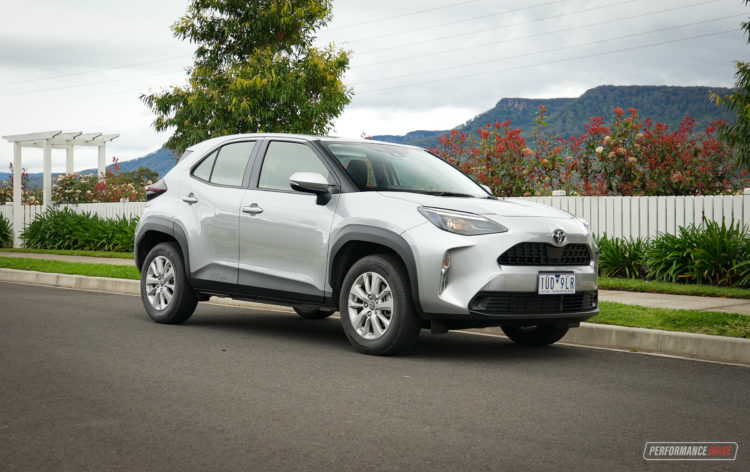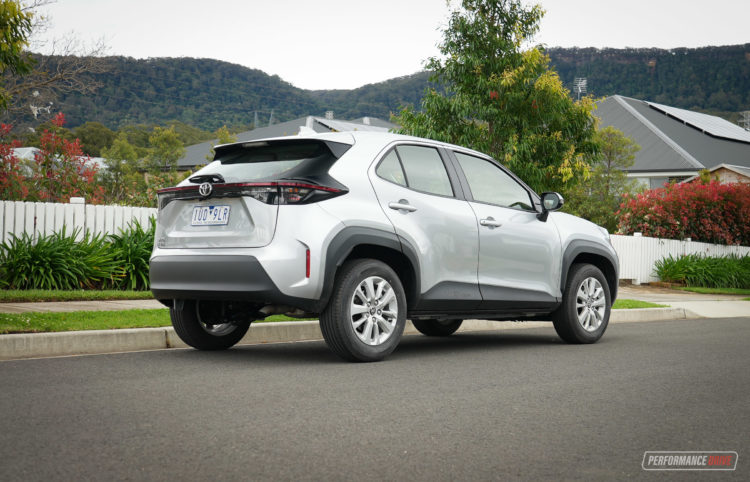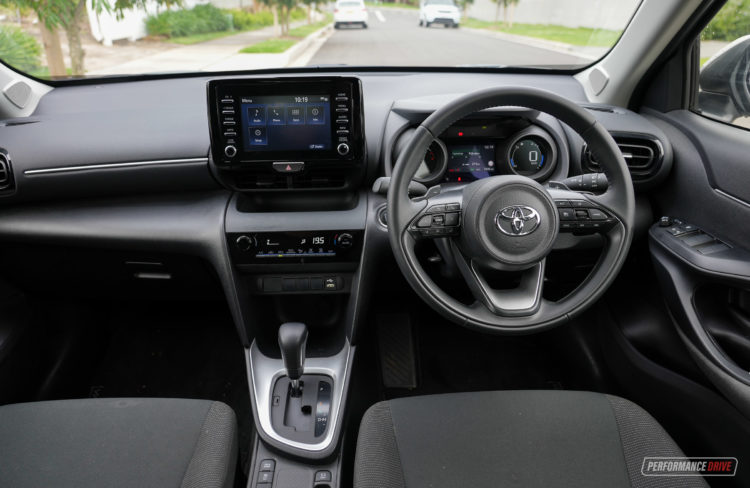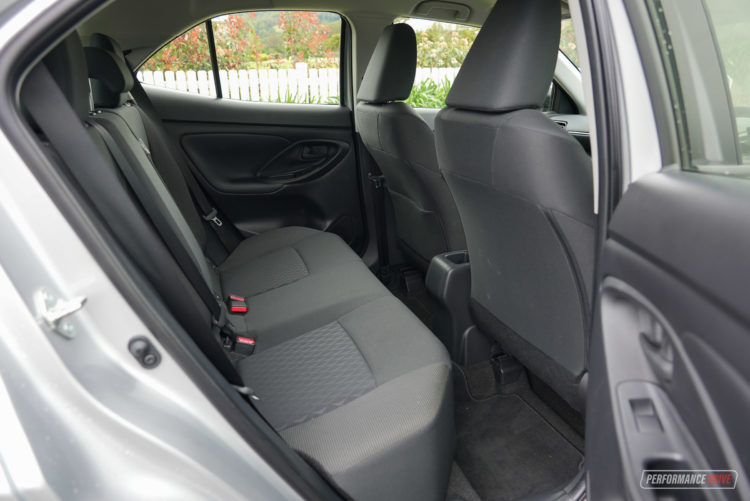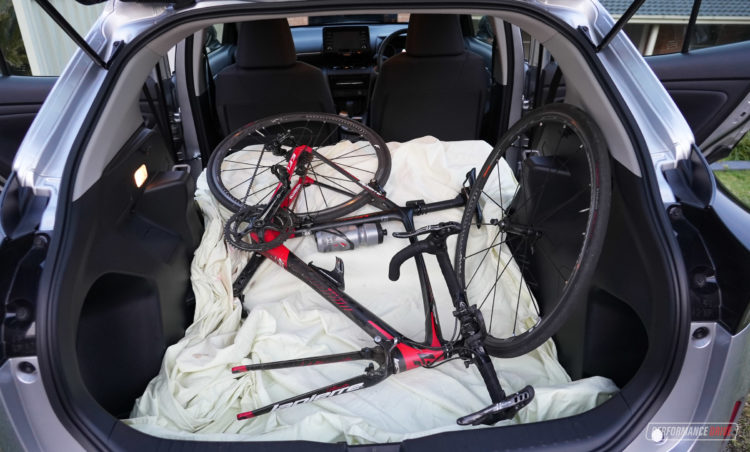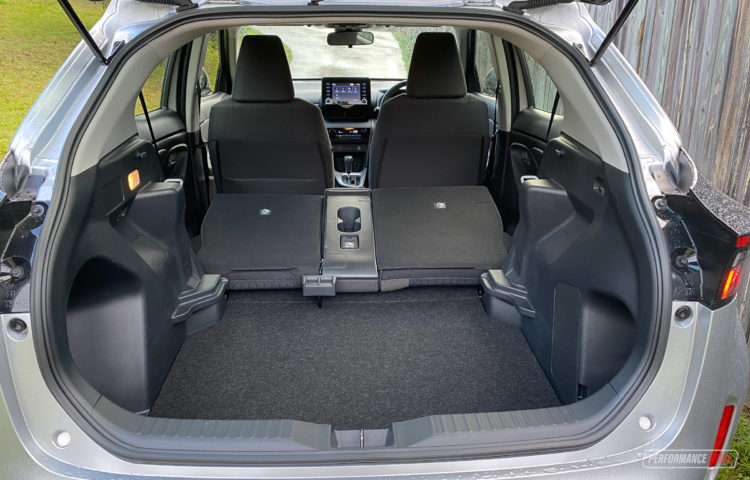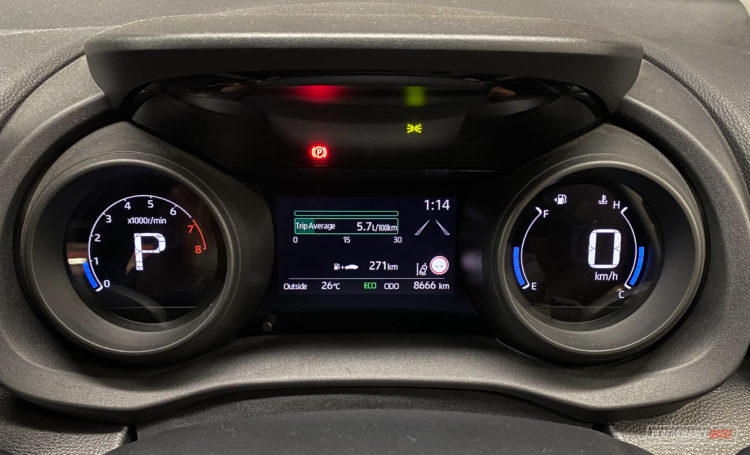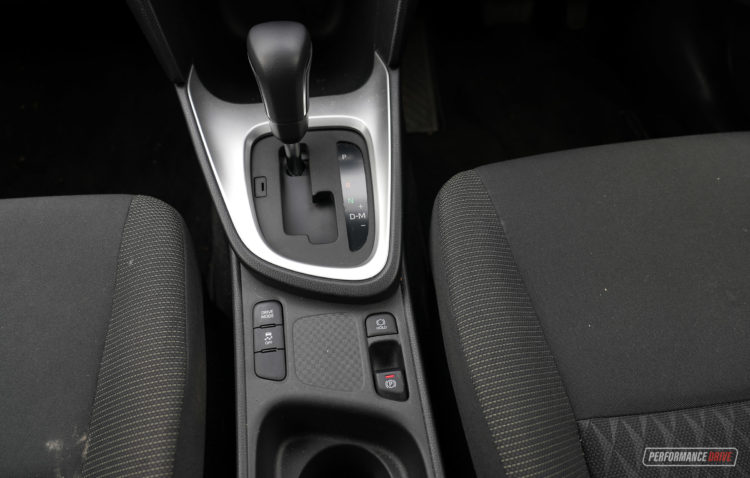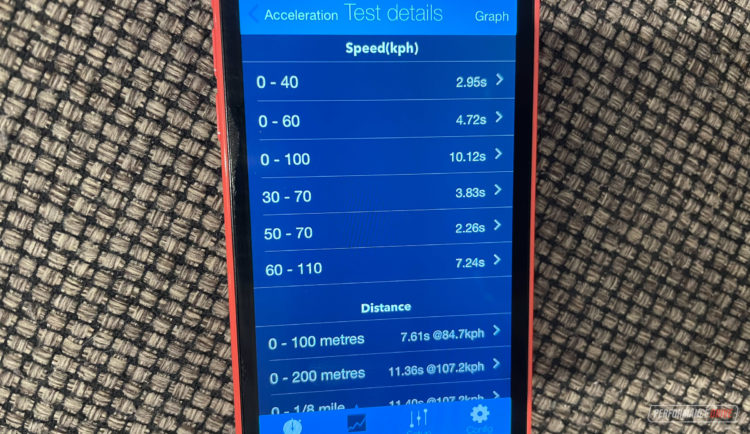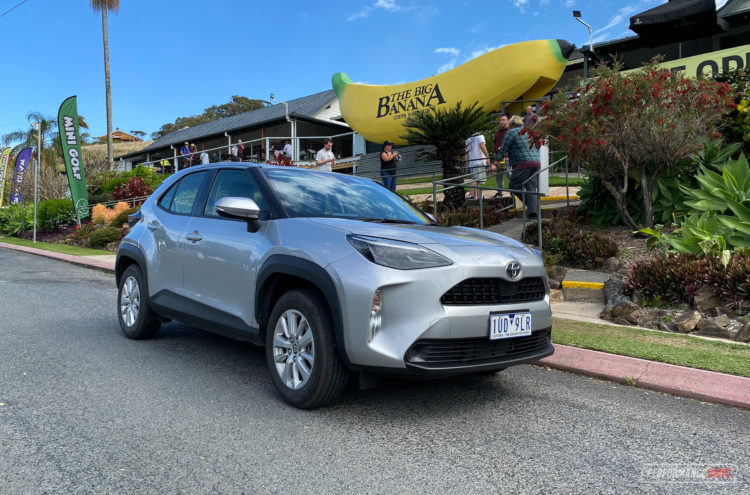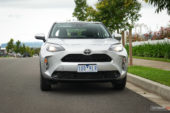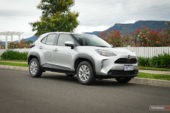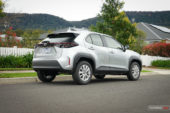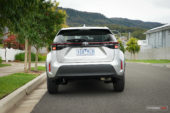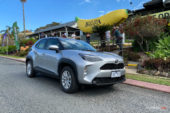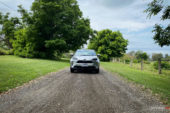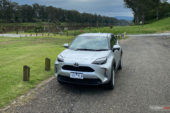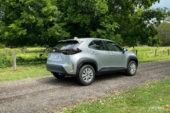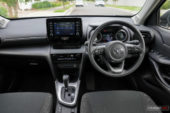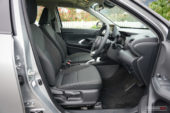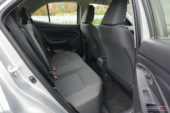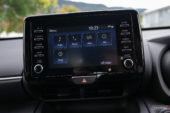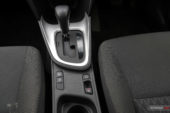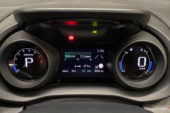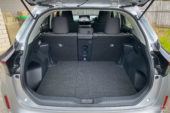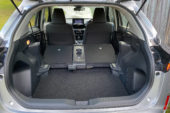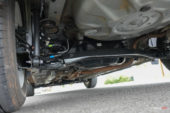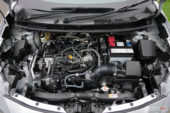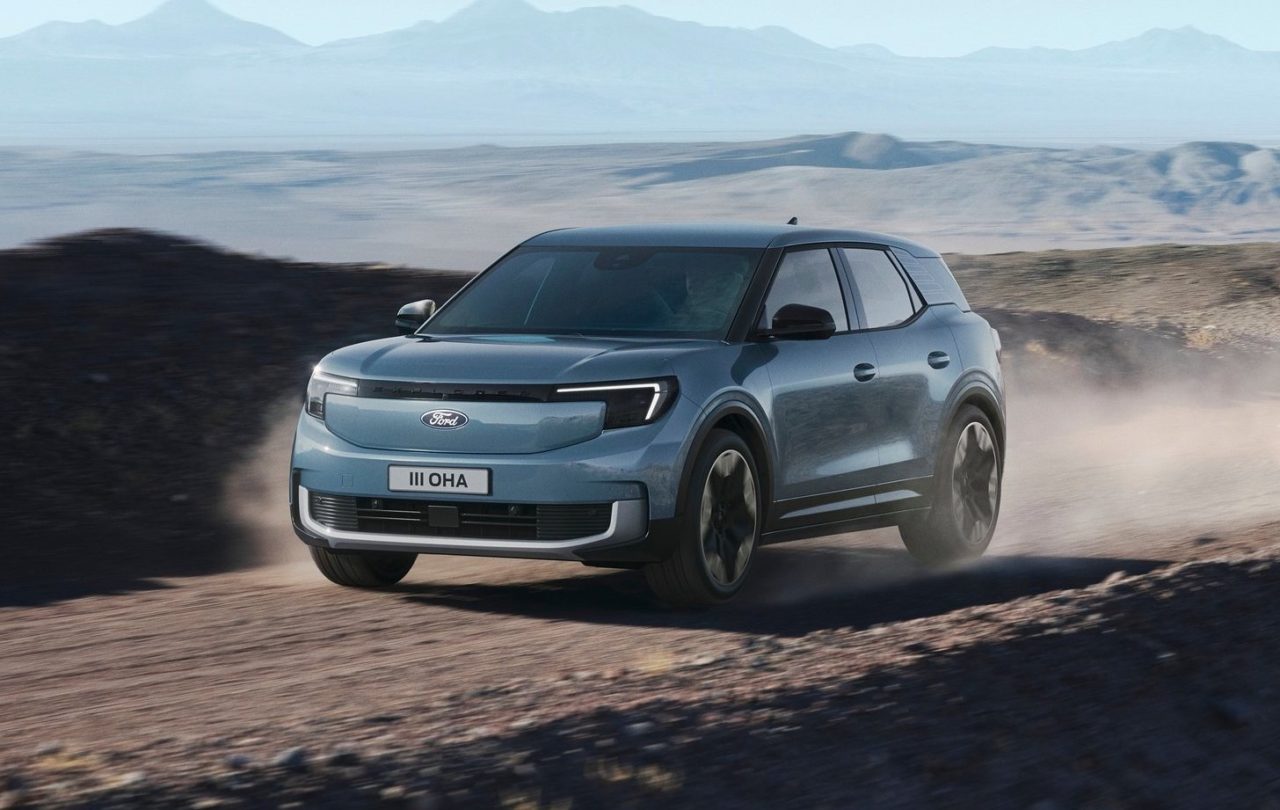The 2023 Toyota Yaris Cross has been designed to offer the convenience of an SUV with the efficiency and affordability of a hatchback. And it showcases some impressive features to help it stand out in its class. But is it still an appealing purchase in base GX form?
Toyota offers a fairly extensive range, so it is likely to cover a large market footprint. Petrol and hybrid options are available, with four different trim levels; GX, GXL, Urban, and GR Sport. There’s even all-wheel drive to select from – an uncommon functionality at this end of the market. In fact, at the time of writing there are 10 different variations to choose from.
The model we’re testing here is the absolute entry spec, featuring the petrol engine and front-wheel drive. All come equipped with a CVT automatic in Australia, with no option for a manual. Prices start from $27,840 for this GX, and soar up to $38,490 for the flagship Urban AWD hybrid. The GR Sport, if you’re wondering, comes in FWD hybrid form only ($35,840).
One of the great things about the Yaris Cross, and in fact most Toyota vehicles, is that you can option for the hybrid powertrain throughout the range. In other words, Toyota doesn’t reserve the technology for higher-spec, higher-priced models. For the GX, the hybrid system is $2000 more for hybrid FWD and $5000 for hybrid AWD.
2023 Toyota Yaris Cross GX – THE SPECS
[column width=”47%” padding=”6%”]Engine: 1.5-litre petrol three-cylinder
Output: 88kW@6600rpm / 145Nm@4800-5200rpm
Transmission: CVT auto
Drive type: Front-wheel drive
Wheels: F & R: 16×6.5, 205/65
ANCAP: Five stars
Tare weight: 1160kg
Power-to-weight: 13.18:1 (kg:kW)
Official fuel economy: 5.2L/100km
Economy during test: 5.7L/100km
Fuel capacity/Type: 42L/91 RON[/column] [column width=”47%” padding=”0″]Power efficiency: 16.92kW:L/100km
0-60km/h: 4.72 seconds*
0-100km/h: 10.12 seconds*
60-110km/h: 7.24 seconds*
1/4 mile: 17.49 seconds at 135.4km/h*
Max acceleration: 0.546g*
100-0km/h braking: 3.03 seconds at 39.71 metres*
Max deceleration: -1.273g*
Decibel at idle: 46*
Peak decibel at 60-100km/h: 89*
Priced from: $27,840[/column][end_columns]
* Figures as tested by PerformanceDrive on the day. Factory claims may be different
2023 Toyota Yaris Cross GX – THE PACKAGE
First off, let’s talk about design. The exterior of the Yaris Cross GX looks distinctive with its bold frontal area and angular headlights. Its chunky wheel arches make it look bigger than it is, giving it a pouncing stance on the road while helping it stand out from other vehicles in this competitive class. It also comes with some stylish touches such as LED daytime running lights, 17-inch alloy wheels and black accents around the windows for added flair.
Inside, it is pretty bare, as you’d expect for a base model at this price point. There are lots of hard-wearing plastics around the dash and door trims, but we’re sure some buyers, particularly those investigating the ‘GX’ end of the market, will appreciate the simplicity of the layout and location of the controls. A separate climate control panel is easy to find and use, incorporating digital climate control.
Atop the centre fascia is the company’s older touch-screen infotainment suite. Look, it is quite basic in terms of graphics and menu layout, but again, we think there is a market for this simpler arrangement. We like the physical buttons on the sides of the screen so you can just jump straight into various sections without having to dig around in the screen. Android Auto and Apple CarPlay come standard, along with a rear-view camera and even digital radio. It’s all connected to a basic six-speaker sound system.
Front passenger space is decent for this class thanks to a tall and upright cabin orientation – this is not one of those swoopy coupe-style SUVs. The cabin width is narrow but we think there is enough space between the seats. So much so that Toyota has installed a nifty centre console in between, complete with cup holders and some storage. Again, the practicality is appreciated.
Rear seat space is obviously a bit squishy for large adults, however, legroom is surprisingly adequate for such a small vehicle. This is helped by a high-mounted seat that leaves room for your legs to dangle down. It’s not ideal for a full family but it is enough for temporary transport or giving the kids a ride to school. There are no climate vents in the back in the conventional spot, however, this is a petite cabin so the air-con does not struggle to fill up the cabin volume.
Boot space is rated at an impressive 390L. That’s more (a lot more) than the Corolla hatch (217L). You can fold down the rear seats to utilise even more space (volume not provided), although, the rear seats don’t fold down flat and out of the way if you have the multi-level floor in its lowest position. Slot the removable floor into its high position and the load space levels out with the folded seats. In any case, we managed to fit a bicycle in here with the front wheel removed with no issues.
Safety-wise, Toyota has included its latest suite of driver assistance technologies such as autonomous emergency braking with pedestrian and cyclist detection, lane departure alert with steering assist (that can be turned off easily via a button on the steering wheel), intersection turn assist, road-sign recognition, and even adaptive cruise control (excellent for a base model). The Yaris Cross is also the first in its class to come with a centre airbag as standard.
Toyota’s Connected Services is also included (the Yaris Cross was the first to offer the tech in Australia). This system is able to automatically call emergency services in the event of an accident, and it can send location data to personnel via its on-board Stolen Vehicle Tracking technology. There’s also an SOS button to quickly call for emergency. The Yaris Cross has been awarded the full five-star ANCAP safety seal of approval.
2023 Toyota Yaris Cross GX – THE DRIVE
For a naturally aspirated engine, and a tiny three-cylinder one at that, we think it is impressive how Toyota engineers have managed to spread peak torque across a window. A small window, between 4600-5200rpm, but still a great effort – without a turbocharger it is difficult to manipulate torque as the engine/ECU can’t manage turbo boost pressure electronically.
Instead, this ‘M15A-FKS’ engine is built using a very high compression ratio of 13.9:1, which helps to maximise response and high-rev efficiency, as well as direct injection (six-hole injectors), and intelligent variable valve timing for the twin-cam inlet and outlet. As a result the engine is very efficient and produces 88kW and 145Nm.
The official fuel consumption average is just 5.4L/100km and the average emissions output is 124g/km. In the real world we experienced an average of 5.7L/100km. And that included a big drive along the east coast of Australia. Small engines like this are not usually in their happy place when cruising at 100km/h or more.
Do you need to option up to the hybrid? Well, we tested the GXL 2WD hybrid a couple of years ago and we returned an average consumption of 4.9L/100km. That might work out for you in the long run, especially if you spend more time in the suburbs or in the city. On the other hand, if you’re regularly taking long trips on highways or country roads, this petrol setup might be better suited due to its simplicity and fewer moving parts and so on (in terms of potential servicing requirements).
A big help is the CVT auto transmission that incorporates 10 simulated gears, including a first gear and continuously variable 2nd-10th gear. The ‘gears’ ensure the engine remains at optimum revs at most speeds. Obviously if you push it to or beyond the national speed limit the engine does start to moan and protest, reducing efficiency.
Performance isn’t as bad as you might expect. We did some 0-100km/h runs with our Vbox as usual, but we didn’t video it because we assumed there would be little demand in witnessing the capability. Nonetheless, the best sprint we saw returned a time of 10.12 seconds. Interestingly, that’s a smidge quicker than the 10.55-second time we recorded in the GXL 2WD hybrid, on the same piece of private road. The time is also quicker than the 10.62-second achievement we saw in the regular Yaris ZR hatch, but we notice that was tested during the Aussie summer.
As for the driving feel and handling, the Yaris Cross GX exhibits some minor body lean when taking on corners like you’re Max Verstappen. The tall-ish 205/65 tyres fitted here likely contribute. However, the steering offers decent engagement and communication, and, in general, it can be pretty fun to dart about in twisty conditions.
With those tall tyres it means the ride comfort is good. The tyres might also come in handy if you live in the city and often travel over broken bits or road or have to park in less-than-smooth positions (like, half up the kerb).
2023 Toyota Yaris Cross GX – THE VERDICT
It’s a Toyota, so practicality, reliability and fuel efficiency are paramount here. These are its most alluring aspects, which probably means it meets the highest priorities of many buyers in this specific market segment. Going for the GX doesn’t leave you crying for more features but the cabin is fairly basic and down-to-earth.
We don’t think you need to option up to the hybrid package unless you really want the added safety and security of all-wheel drive. In which case it’ll require a considerable $5k investment over this standard spec. As it is the fuel consumption is already outstanding so that shouldn’t be your top concern or the deciding factor in our opinion.
The Yaris Cross is underpinned by the highly-regarded TNGA platform which means it handles as well as it should for this class, and we’d even say there is a bit more pep and fun in the steering than many rivals. Performance is about average, despite being such a tiny engine (kudos to the engineers).
Overall, we think it is a sound package and it could be a smart buy as Toyotas often return excellent resale value when it comes time to sell or trade in.
[column width=”47%” padding=”6%”]PROS:
– Very fuel efficient, including in the real world
– Decent driving feel and handling
– GX means basic but very user-friendly and practical
– GX is available with hybrid
– Impressive standard safety
[/column] [column width=”47%” padding=”0″]CONS:
– Uses Toyota’s older touch-screen system
– Rain water catchment above rear doors needs refinement
– No centre armrest (front and rear)[/column][end_columns]
As always, if you’re thinking about buying a new car don’t forget to click here to speak with our car buying specialists.
